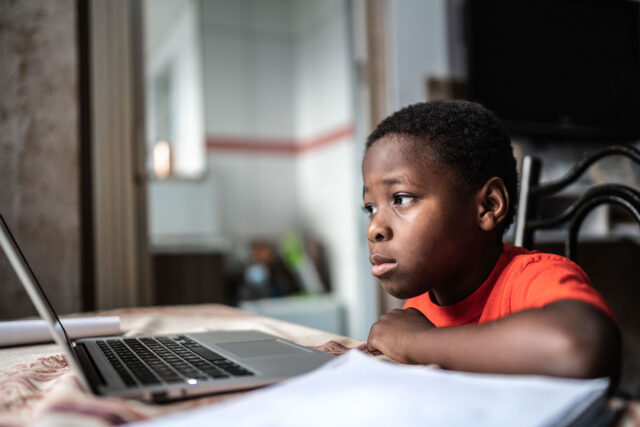For many California students the pandemic led to significant learning loss, with children in early grades most affected. A third of low-income students as well as Black and Latino students lacked reliable internet access in spring 2020, a persistent digital divide that further widened gaps. By fall 2020, however, many California districts had invested resources to better support remote learning, by providing internet or devices, communicating more with families, and providing extra support for English learners.
In a recent presentation, PPIC researcher Niu Gao reviewed findings from a PPIC report examining how districts handled distance learning amid the constraints of COVID-19. Afterwards, PPIC researcher Laura Hill moderated a panel discussion with California superintendents to garner their insights about distance learning over the past year and prospects for reopening schools.
Most districts have prioritized technology access. “We are lucky we are a 100% technology devices district,” said Hilda Maldonado, superintendent of Santa Barbara Unified, which provides iPads for every child. But the district still faced issues with connectivity, which was addressed by investing in hotspots.
Students with access to supports such as a stable home or learning partnerships like the Boys or Girls Club experienced much less learning loss than those without such access, according to Ed Manansala, superintendent of schools for El Dorado County Office of Education, which covers a large swath of rural districts.
School closures had an immediate impact on students in terms of social isolation and technology gaps. But Manansala observed that closures also impacted families, childcare, businesses, and even countywide services.
California districts are paying attention to student mental health by funding social emotional learning programs and counselors. “Many of our students are living in distress,” said Nancy Albarrán, superintendent of San Jose Unified. “They live in distress in normal times, and this situation has exacerbated it.”
When Hill asked about the importance of getting students back inside school buildings for in-person instruction, Albarrán said, “We think it is the best place for students to be participating.” Younger students have a relationship with their teacher, and students can learn to socialize and interact with other students. “But we are mindful that approach doesn’t work for all students.”
“There are some kids thriving in the distance model—their grades have gone up,” Maldonado said; Santa Barbara Unified wants to keep that choice available. “We learned that we can shift quickly. The state needs to know that can be done.”
Through distance learning, districts have also learned lessons about equitable grading practices, lowering class sizes, and the value of small group instruction. Albarrán noted a stronger relationship between staff and students’ families. “We got to know families by name. We repositioned staff to help—bus drivers made calls and delivered supplies; we worked to connect families with resources.”
Students encountered loss and challenges over the past year. While returning to school will be a valuable step forward for many, innovating in the distance learning space will benefit others. “We need to create a system that is empathetic and listening,” Manansala said.



